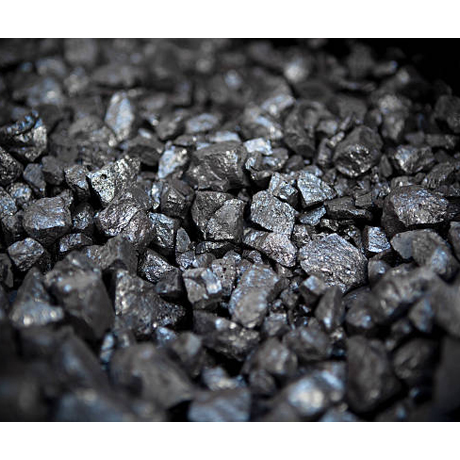Zinc
Basic facts about Zinc
Zinc is a chemical element with the symbol Zn and atomic number 30. Zinc is a slightly brittle metal at room temperature and has a blue-silvery appearance when oxidation is removed. Zinc is a bluish-white, lustrous, diamagnetic metal, though most common commercial grades of the metal have a dull finish. Zinc is the 24th most abundant element in Earth's crust and has five stable isotopes. The most common zinc ore is sphalerite(zinc blende), a zinc sulphide mineral. Zinc is refined by froth flotation of the ore, roasting, and final extraction using electricity (electro winning). The element is normally found in association with other base metals such as copper and lead in ores. Zinc makes up about 75 ppm (0.0075%) of Earth's crust, making it the 24th most abundant element. Soil contains zinc in 5–770 ppm with an average 64 ppm. Seawater has only 30 ppb and the atmosphere, 0.1–4 µg/m3Zinc metal was not produced on a large scale until the 12th century in India, though it was known to the ancient Romans and Greeks. The element was probably named by the alchemist Paracelsus after the German word Zinke (prong, tooth). German chemist Andreas Sigismund Marggraf is credited with discovering pure metallic zinc in 1746. Zinc is an essential mineral, including to prenatal and postnatal development. Zinc deficiency affects about two billion people in the developing world and is associated with many diseases. Though the intensity and hardness of zinc are not good, it has valuable mechanical properties, and when combined with aluminium and copper to form zinc alloys, its intensity and hardness improve greatly.
More facts about Zinc :
With good calenderability, abrasive resistance, corrosion resistance, cast ability, and room temperature mechanical properties, zinc can be made into various alloys with many other metals. Mainly in the form of galvanization, zinc-based alloys and zinc oxide, it has applications in the automobile, construction and shipbuilding industries, light industry, machinery, household electrical appliances, batteries and other industries. Currently, its consumption among non-ferrous metals is second only to aluminium and copper.As in moist air, a protective layer is easily produced on the surface of zinc, which prevents further atmospheric corrosion. zinc is widely used in the galvanization industry. Galvanization is primarily used in steel and surface coatings on steel structures (eg. galvanized sheet) for automobiles, construction, shipbuilding, light and some other industries. Examples include: coatings containing zinc powder; zinc spelter, used in connections (eg. steel components connecting ships, bridges and offshore oil and gas derricks), roofing made of galvanized iron sheet; and steel strip hot-dip galvanization.
At present, galvanization accounts for half of all zinc consumption.
Uses of Zinc :
- Zinc is mostly used as an anti-corrosive agent in other metal products.
- Zinc is used as an anode on other metals particularly metals that are used in electrical works...
- It is also used as an anode material in batteries.
- Zinc is alloyed with copper to create brass.It is also used in alloys such as nickel silver, typewriter metal.
- In addition, zinc has good electromagnetic field resistance properties. In the case of radio frequency interference, zinc plate is a very effective shielding material.
- And as zinc is non-magnetic, it is suitable for making components and covers of instruments and meters.
- Since zinc produces no sparks, either alone or in collision with other metals, it is suitable for making explosion-proof equipment.
- Zinc fertilizer (eg. zinc sulfate and zinc chloride) can promote plant cell respiration and carbohydrate metabolism.
- Zinc powder, lithopone and zinc chrome can be made into pigments.
- Zinc oxide can also be used in the pharmaceutical, rubber, paint and other industries.
Zinc Atomic Data
| Atomic symbol | zn |
|---|---|
| Atomic number | 30 |
| Atomic Mass | 65.38(2) |
| Density | 7.14 g/cm3 |
| Melting point | 692.68 K, 419.53°C, 787.15°F |
| Boiling point | 1180 K, 907 °C, 1665 °F |
| Electrical resistivity | 59.0 nΩ·m (at 20°C) |
| Electron configuration | [Ar] 3d10 4s2 |
| Thermal conductivity | 116 W/(m·K) |
| Mohs scale hardness | 2.5 |
| Thermal expansion | 30.2 µm/(m·K) (at 25°C) |
